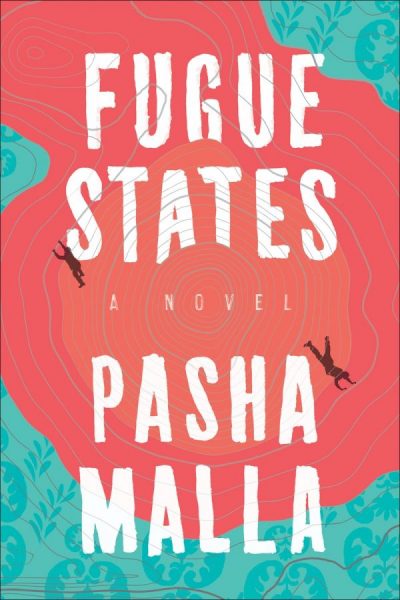Concordia alumnus releases his latest novel and discusses his journey as a writer
On your next trip to the local bookstore, you might notice the eye-catching, colourful cover of a book titled Fugue States by Pasha Malla. Released on May 23 at a launch event at Librairie Drawn & Quarterly in Montreal, this novel tells the story of Ash, a young man who recently lost his father, a doctor from Kashmir, India. His loss reunites him with his childhood friend, Matt, and together they embark on a journey from Montreal to his father’s homeland of Kashmir.
Known for his fiction stories filled with witty banter and a keen attention to detail, Malla creates a refreshing sense of realism in Fugue States. “I wanted to write something that was a bit more realistic. I guess my other stuff was supernatural,” he said. “The end of the book changes from that a little bit, but for the most part, I wanted a plot with people moving through space and time and talking in a way that is familiar.” Malla extends that sense of familiarity to include his personal experiences. “All my other writings at this point have not been about myself or about my family from Kashmir and that political situation—then I asked myself, why? It’s part of who I am,” he said. According to Malla, the details in his latest novel are a combination of events from his life and stories people have told him.
Malla didn’t start his career as a novelist. Instead, he majored in film production at York University in Toronto. According to Malla, however, film production and screenwriting were not his strong suits. He discovered his true passion while studying abroad for a year in Australia. “It was a good year for me—it allowed me to figure out what I wanted to do,” Malla said. “I love movies, but I don’t want to make movies. I want to write books.” He then moved to Montreal and completed his master’s degree in English and creative writing at Concordia University. Since obtaining his graduate degree, Malla has written six books and collaborated on two other novels. His previous work includes The Withdrawal Method, All our Grandfathers are Ghosts, 1999 and People Park. Malla has also written a monthly column for The Globe and Mail and is a regular contributor to The New Yorker. In addition to his own writing, Malla teaches the art of writing at the University of Toronto and Brock University.
According to Malla, the meaning of the title, Fugue States, is a mental condition, like amnesia, when someone experiences a break from reality. “The title itself is a metaphor to the various themes explored in this novel such as memory, identity and the idea of Kashmir itself as a forgotten state,” he said.
“I like to look at what is a dominant narrative in the culture that I think could use some critiquing, and I try to figure out a way of writing against it, of offering an alternative,” Malla said. “I hope that people read it actively and reflect on it, but you can’t control that—it’s an unrealistic anxiety to feel that everyone is going to think what I want them to think.” In Fugue States, he tackles the dominant narratives about masculinity. He explores the meaning of being a man, and the kind of behaviour and toxic culture ideas about masculinity create. “I am trying to say things about misogyny or the way that masculinist culture has inbuilt sexism,” he said.
Malla also had the opportunity to travel to Kashmir with his father—a trip he hoped would provide him with deeper insight for the third part of his book, which takes place there. However, Kashmir was not what he expected. “The idealization does not match up with the reality, and this is what the theme of the book is,” Malla said. “The trip was emotionally difficult, but helpful.”
The process of writing Fugue States took Malla six years. According to Malla, the most difficult part of writing this book was getting the words right. “I like reading books and feeling that it’s perfect, it’s precise, exact and couldn’t be said any better. It’s probably why it took me six years,” he said. He added it’s also important to him that the story and its message be accessible to people with varying backgrounds and experiences. “If there were only one way [into the story], I feel I would have done a bad job,” he said.
Despite teaching writing to people of different ages, cultures and socioeconomic backgrounds, Malla said he has noticed that most people put too much pressure on themselves to find the perfect first line for their book. “I think people worry that the first thing they write is the start to their story. There’s all these great books that have these amazing first lines, and that’s what you want to do. But when you start writing, it’s like turning on the engine on a car. It’s the beginning of the voyage—maybe you still have to get gas or go get groceries and then eventually you get on the road,” Malla said. “It’s allowing yourself space to write things that maybe will not matter.”
